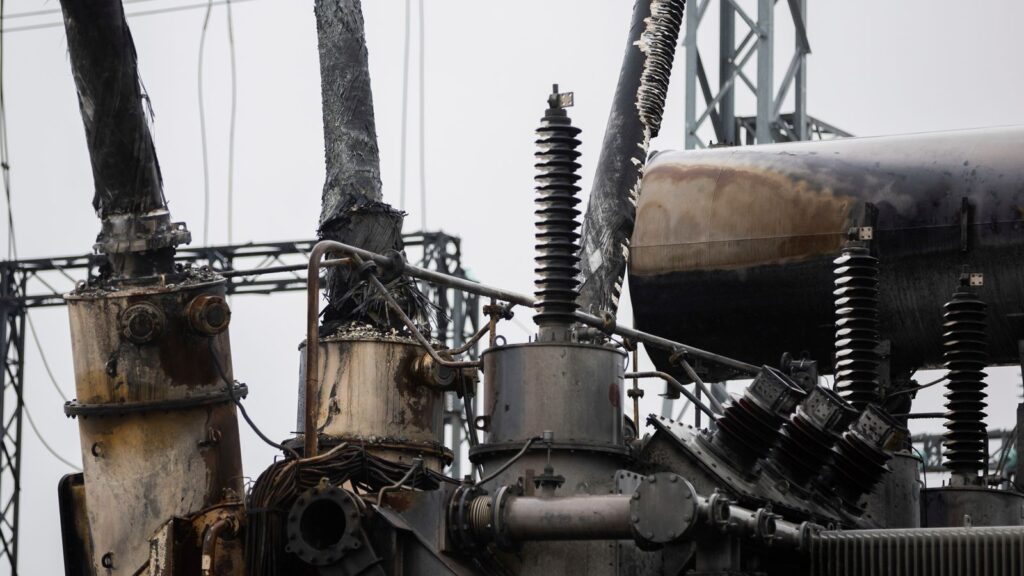Russia has escalated its assault on Ukraine’s critical infrastructure, launching a significant barrage of missiles and drones that targeted energy facilities across the country. This attack, confirmed by officials in Kyiv, has resulted in further damage to Ukraine’s already strained power grid and injured at least two people.

The Ukrainian Air Force reported that this bombardment marks the eighth major attack on Ukrainian power plants in just three months. The relentless campaign has left Ukraine grappling with persistent rolling blackouts, severely impacting civilian life and the country’s ability to maintain essential services.
According to Ukrainian officials, Russia deployed 16 missiles and 13 Shahed drones, commonly known as kamikaze drones, in this latest assault. Ukraine’s air defenses claim to have successfully intercepted 12 of the missiles and all of the drones, showcasing the ongoing aerial battle between the two nations.

The state-owned power grid operator, Ukrenergo, confirmed damage to equipment in the southeastern Zaporizhzhia region and the western Lviv region. Regional governor Ivan Fedorov reported that a fire at an energy facility in Zaporizhzhia injured two workers.
The human toll of the conflict continues to mount, with at least three people killed in the Russian shelling of Kharkiv, Ukraine’s second-largest city. An attack that struck a residential area wounded 19 others, underscoring the ongoing threat to civilian populations, according to Mayor Ihor Terekhov.

This latest Russian offensive comes following Ukrainian strikes on four oil refineries in southern Russia earlier this week. The Ukrainian military, in a rare public statement, confirmed these attacks, while the Russian Ministry of Defense reported the destruction of five drones over the Sea of Azov and the western Bryansk and Smolensk regions.

With the 1,000-kilometer frontline remaining largely static, both sides have increasingly targeted each other’s infrastructure in attempts to undermine their opponent’s warfighting capabilities. This strategy has caused significant civilian hardships, especially in Ukraine, as it has destroyed half of the country’s power generation capacity.

As the conflict enters its third year, the international community continues to express concern over the humanitarian impact of these attacks on civilian infrastructure. The ongoing destruction of energy facilities not only affects immediate living conditions but also poses long-term challenges for Ukraine’s recovery and reconstruction efforts.
The situation remains fluid, with both sides adapting their strategies in response to each other’s actions. As winter approaches, the targeting of energy infrastructure is likely to have an even more severe impact on civilian populations, raising urgent humanitarian concerns.
Skynews.com



